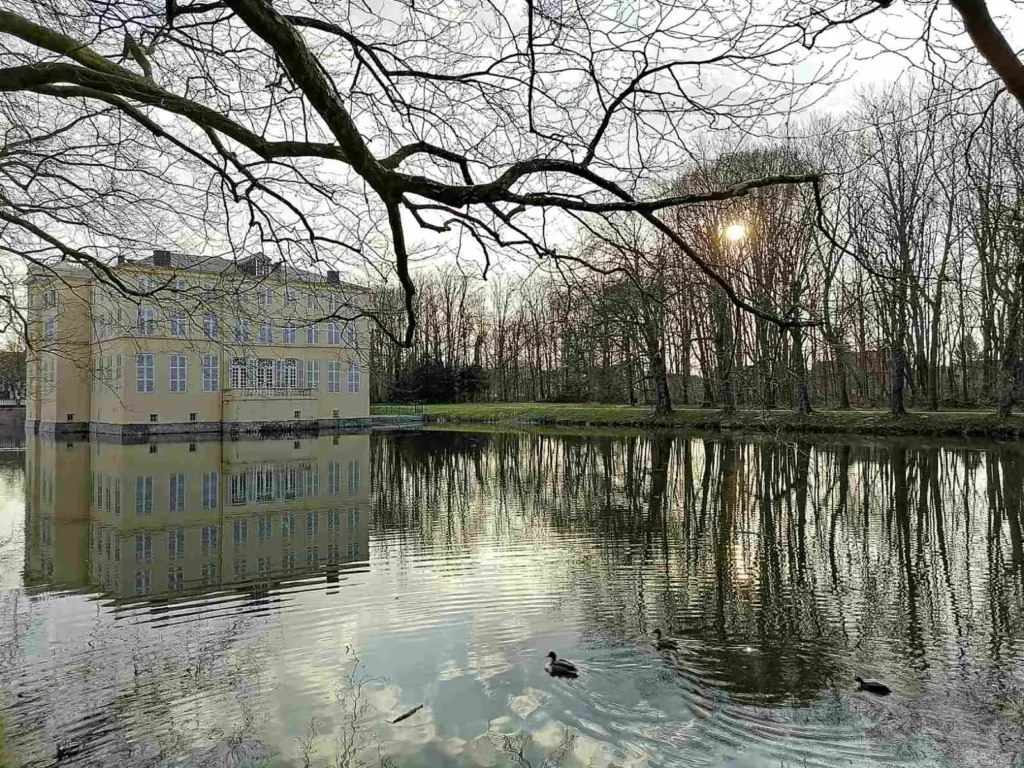Location
The Academy is taking place in the Kasteel d’Ursel in Hingene.
D’Ursel Castle
D’Ursel Castle (Dutch: Kasteel van Hingene, also known as the Kasteel d’Ursel) used to be the private summer residence of the Duke of Ursel in Hingene in the municipality of Bornem, province of Antwerp, Belgium. Today it is property of the State, and opened to the public.
History
The first resident was Diederik van de Werve (1519-1598), his descendants sold it to Conrad III Schetz in 1608. The estate became the summer residence of the House of Ursel. The Dukes of Ursel and their family resided for 350 years on the estate. Its original view can be seen in the Flandria Illustrata. A famous resident was Conrard-Albert, first Duke of Ursel (1665-1738). His son, Charles, 2nd Duke d’Ursel asked Giovanni Niccolò Servandoni (1695-1766) to redesign the family estate. The front was made symmetric like a palace.
The duke received important noblemen here, such as Johan von Sinzendorf und Pottendorf (1739-1813) and Joseph de Ferraris. During the 18th century the castle was known for banquets and balls. Marriages in the family were celebrated by the whole village, the dukes usually being well regarded locally. On 10 augusti 1876 the Queen and the Duke and Duchess of Saxony visited the castle and the town of Hignene. In 1894 Prince Albert and his brother in law, the Prince of Hohenzollern visited the castle.
Around 1960 the castle was sold by Henri, 8th Duke d’Ursel, the furniture, family archives and contents of the library were removed from the castle. The House of Ursel left the town, and chose to reside henceforth in Brussels.
In 1994 the province of Antwerp obtained ownership and restored the estate to its 17th century state. The current Duke of Ursel gave an important part of private ducal Collection in private loan (Commodate), to be put on exhibition in the rooms of the estate.





Hingene
Hingene is a village and deelgemeente (sub-municipality) of the municipality of Bornem in the province of Antwerp, Belgium. The village is bordered to the north by the Scheldt and to the east by the Rupel. It is located about 16 kilometres (9.9 mi) south-west of the city of Antwerp.
History
In 1846, a hoard of coins was discovered in Hingene from the Roman era. Due to its proximity to the Scheldt and Rupel, the area mainly consists of polder land. Early dike building started in the 11th century, and during the 15th century the rivers were constrained by dikes.
The early history of the area is characterised by rivalry with Bornem. In 1535, Hingene became property of Henry III of Nassau-Breda. His nephew William the Silent became Stadtholder of Holland, Zeeland and Utrecht, and was forced to sell Hingene in 1560 as an independent heerlijkheid to the Lord of Grobbendonk whose family later became known as the Dukes of Ursel. The Ursel family lived in the D’Ursel Castle whose domain dominates the village.
The village of Nattenhaasdonk used to be part of the municipality of Hingene. Nattenhaasdonk was an independent parish and more important than Hingene until the 16th century. The February flood of 1825 destroyed Nattenhaasdonk which remained under water for weeks and was abandoned.
Hingene used to be an independent municipality until 1977, when it was merged into Bornem. In 1980s, the river dikes were heightened after the devastating flood of Ruisbroek in 1976.
Address
Kasteel d’Ursel, Wolfgang d’Urselstraat 9, 2880 Hingene
nearest Town
The nearest town is Bornem and from there it is a 2,5 km walk.
